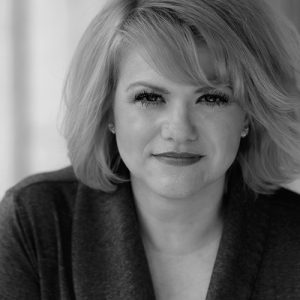
As musical theatre performers, we are sometimes required to do it all – sing, dance, act, build sets, market shows, etc. At least when it comes to your voice, being a “jack of all trades” – belting and singing legit- brings greater vocal freedom, power and health.
Singers who consistently train various co-ordinations in their voice find that those opposite co-ordinations complement and support each other. For instance, if you would really like to use belt co-ordinations with greater ease and range, you should include some legit (classical) exercises and songs into your training. On the flip side, if you’d like to improve and strengthen your legit voice, add some belt exercises and songs to your repertoire. By working both sides of your voice, you enhance the instrument as a whole.
There was a wonderful article published in the NATS Journal of Singing in the Nov/Dec issue of 2007. The piece was written by Robert Edwin, Associate Editor of the NATS Journal, and he titled it Belt Is Legit. Coming from a musical theatre background, my curiosity was piqued by this title. Mr. Edwin discussed a very important concept which I had personally felt committed to for years. He said, “All vocal training, whether classical or Contemporary Commercial Music, should include the development of the entire vocal mechanism from the lowest TA-dominant (chest voice) sound to the highest CT-dominant (head voice) sound, as well as the multitude of resonance options, so that the entire musculature gains strength, flexibility, coordination, and endurance…in light of the research, developing only one vocal fold source or limiting resonance options is simply bad voice pedagogy.”
Those vocal fold source options include squared, pressed vocal folds to an edge, ligament, less closed quotient vocal folds. Those resonance options include a lower first formant and a boosted first harmonic to a higher first formant and a boosted second harmonic. It includes every co-ordination, every shade in between.
This approach is also used by Mary Saunders-Barton, Head of Voice Instruction for the Bachelor of Fine Arts in Musical Theater at Penn State and Head of the MFA in Vocal Pedagogy for Musical Theatre. “Saunders-Barton advocates that a balance of both vocal qualities and muscle group activity (thyroaryntenoid and crycothyroid) results in a balanced middle voice with the ability to increase intensity without vocal strain.” (Leborgne and Rosenberg, The Vocal Athlete, p.224-225) You can read more about her approach, humorously called Bel Canto Can Belto on her website.
Dr. Ingo Titze years ago explained that the human voice is not designed for efficient speech, it is designed for “calling” similar to other mammal larynges. Speech puts the TA muscles into a chronic shortened co-ordination and is most effective in a low frequency, so the shortening becomes more pronounced. However, “calling” requires lengthening of the vocal folds and CT muscles to contract. Even though we can speak, it is “calling” that makes our speaking more efficient.
Here’s my point. The body is always looking for balance and in fact functions at its highest efficiency when it is in balance.
However, to find balance, extremes must be experienced. Yin vs. Yang. Heads vs. Tails. Air vs. Muscle. TA vs. CT. Belt vs. Legit. High Larynx vs. Low Larynx. These opposites work together to help us find our center, our most efficient state or what as voice teachers, we call “mix”. Karin Titze Cox put it this way during a recent conversation we had, “You never know when you are in the middle if you never explore the extremes.”
Sometimes as teachers, especially as teachers that prize and value “mix”, we may become so overly focused on finding the middle that we never explore the extremes with the human voice standing in front of us. Living in a world where nearly every singer who walks through the door wants more vocal power means we have to find ways to explore the singer’s extremes so they can experience the middle or “mix” of their voice and therefore tap into power.
In fact, in balancing the extremes (practicing multiple differing co-ordinations) those extremes begin to complement each other.
I tell singers that if they want to learn how to belt, they are also going to learn to sing legit, because belt and legit are two sides of the same coin and by learning one they strengthen the other.
With the exploration of extremes (I’m only mentioning belt and legit co-ordinations here, but we could discuss the thousands of co-ordination possibilities available to singers), I also try to impart a little knowledge and judgment to the singer. One of my favorite quotes is from Eliza R. Snow and, while she was discussing religious and moral issues, I believe her statement has validity in multiple areas. She said, “Let them seek for wisdom instead of power and they will have all the power they have wisdom to exercise.” Wisdom, to me, means knowledge + judgment in using that knowledge.
I want singers to have a knowledge of the extreme co-ordinations in their voice and then help them exercise their judgment in using those co-ordinations. Bam!
Vocal wisdom! No co-ordination is inherently bad or good. Co-ordination just is. Some co-ordinations are more taxing to the voice than others, but those taxing co-ordinations also allow us to express emotions that are not as believable in less taxing postures. The only thing that is “bad” or “good” is our judgment in using these extremes. Once a singer is comfortable with a multitude of co-ordinations (for example, a singer that can move between “mix”, belt and legit co-ordinations with significant control), we switch from talking about “co-ordination” to talking about emotions of a song. I say something along the lines of, “Your mix co-ordination can express a lot of different emotions, but some emotions are going to drive you out of that mix and that is okay! When the emotion compels you to move out of that place, you move; but always realize that when those emotions ebb you return to mix – it’s your home base.” This gives the singer the POWER to be expressive and tell the story. With knowledge of their extremes and judgment in using those extremes (wisdom), they feel empowered to be artistically authentic instead of focusing on technical accuracy.
After all, even Bertol Coffin said in Coffin’s Sounds of Singing (p.103), “Even too much perfect singing is vocal abuse.”


Growing up in a musical, performance oriented family, Camiah has spent much of her life in entertainment. After studying dance at Brigham Young University for a few years, she relocated to Georgia in 1996. Camiah has been teaching music in the Atlanta area for over 22 years. She has directed small orchestras, children's choirs, church choirs, created holiday performances, and teaches private voice lessons as well. Camiah is a certified instructor for Vocology in Practice (ViP) and International Voice Teachers of Mix (IVTOM). She is also a Mentor Teacher for both ViP and IVTOM, training and assisting other great voice teacher she to reach their full potential. As a voting member of Pan American Vocology Association, Camiah enjoys learning about cutting edge research, science and health standards from today's leading vocal scientists and doctors. She has helped many singers recover from vocal injury and surgery and assisted them as they re-enter their professional careers. Camiah has served as the Director of Musical Theatre for the VocalizeU Artist Intensive and Teacher Training in L.A., where she worked with the top professionals of the music industry and stunningly talented new artists. She also teaches voice for The Aurora Theater in Lawrenceville Georgia. Currently she teaches at Performer's Warehouse, a local performing arts school dedicated to preparing students for college auditions. Camiah is proud to have published multiple articles for ViP, IVTOM, The Nakedness Vocalist and iSing Magazine. Camiah has professional clients on Broadway, national tours and regional theaters. Her clients have been accepted to musical theater programs at prestigious universities such as Boston Conservatory, CCM, CMU, Webster, Syracuse, Texas State, Oklahoma University, BYU and Wright State. In addition to her love of music, Camiah enjoys time on stage where she recently played the female lead, "Connie Lou" in the southern tour of The Forgotten Carols in 2013 and 2015.
Read Full Profile© 2021 TheatreArtLife. All rights reserved.

Thank you so much for reading, but you have now reached your free article limit for this month.
Our contributors are currently writing more articles for you to enjoy.
To keep reading, all you have to do is become a subscriber and then you can read unlimited articles anytime.
Your investment will help us continue to ignite connections across the globe in live entertainment and build this community for industry professionals.